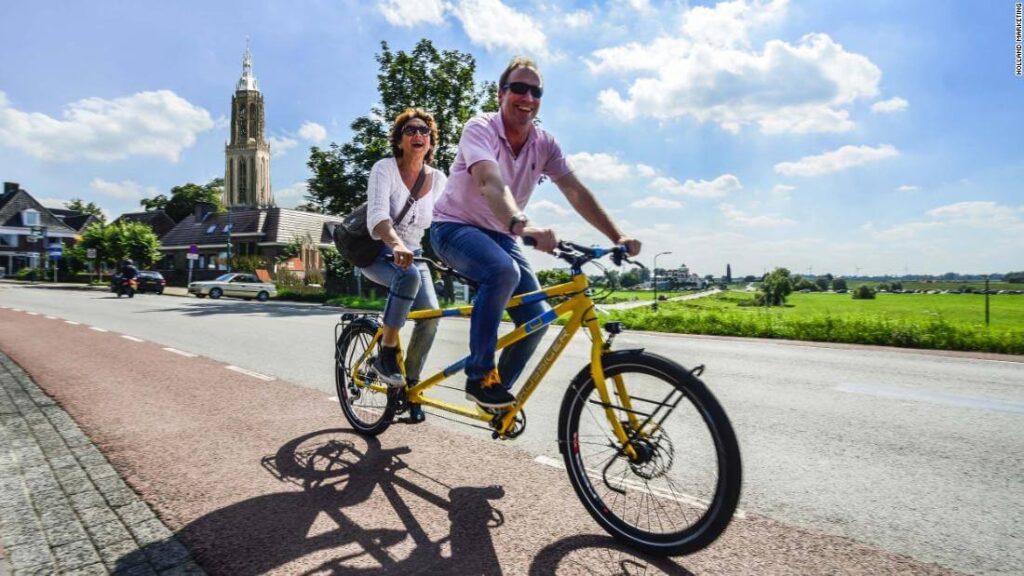“How did the Dutch get their bike infrastructure?” It’s a long story, in fact. But don’t worry, we have the answer in this post. So, don’t skip it if you want to find out.
Overall Situation – Dutch Bike Infrastructure

Even in the past or at the moment, the world way too relies on fossil fuels. As a result, many dense cities on the globe have jammed streets.
Commuting becomes very risky for vulnerable commuters such as cyclists and pedestrians. And that is even more so as these users are children or the elderly.
Just like other countries, the Netherlands had to face this problem as well.
The Change

However, the situation today in the Netherlands has changed.
This country now has the biggest number of bikers in the world, but it is also the safest place when it comes to biking.
This is because of the perfect cycling infrastructure that can be found across the country.
So, how did the Dutch get this high-quality cycle network?
The History – Dutch Bike Infrastructure

Many people think, maybe including the Dutch themselves, that bicycle paths have always been there. However, that is only partly true. Of course, there were several cycle paths, but they were of an entirely different type than today.
These paths were narrow, of poot surface, dangerous, or even absent at junctions and not connected. And cycle paths in the Netherlands at that time were not really necessary. Bikers outnumbered other traffic by far.
After WWII, everything changed. The Dutch had to rebuild their nation and they become incredibly wealthy. From 1948 to 1960, the average income got up by 44%. By 1970, it was staggering 222% more. People could now afford expensive goods. Especially, from 1957, this led to many more cars in the streets. These streets sad to say were not built for cars.
So, people had to destroy buildings to room for the car. They even removed some of the old cycling infrastructures. City squares became car parks. And new development had huge roads for motorized traffic.
The Consequences Of Motorized Traffic – Dutch Bike Infrastructure

This progress came at a terrible cost. Cycling was marginalized, it decreased by 6% every year. In 1971 alone, 3,300 lives were lost. Over 400 of these deaths were children under the age of 14.
The slaughter of kids got people to protest on the streets. They called for safer streets for children as well as cyclists and pedestrians.
Their Calls Were Heard

In 1973, the first oil crisis halted the country. The then Prime Minister told the people of the Netherlands that this crisis was life-changing. They would have to change their ways and be less dependent on energy.
The government enacted policies to encourage cycling fitted perfectly in that picture. For example, they had a car-free Sunday to save on oil.
Around this time, the first car-free city centers appeared.
In the middle of the 1970s, municipalities started experimenting with complete and safe cycle routes away from traffic. Financed by the nationwide government, the first cycle routes were created in The Hague and Tilburg. In retrospect, they could be seen as the start of the country’s modern cycling policies. Cycling increased in a spectacular way. For example, in Tilburg by 75%, and in The Hague by 30% to 60%.
Related Posts You Can Read:
The Plan For Cycling In Urban And Rural Areas In Ireland
Top 7 Hiking Paths That Amaze Your Eyes in New Zealand
Sydney floods again as Australia’s most populous state adapts to climate change.
